While local demand for compact cameras has fallen away dramatically this year, the same can’t be said of interchangeable lens cameras, and with an exciting range of new models about to enter the market, the prospects for local retailers aren’t as dire as recent downwards sales forecasts by Nikon and Canon in Japan might suggest.
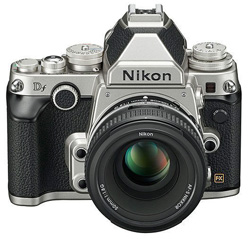
Last week we reported on the first global decline in digital SLR sales from Canon and Nikon since their launch over a decade ago, and this was somewhat supported by CIPA shipment data which also showed global decline.
We speculated in last week’s editorial whether the bad news from Canon and Nikon, who have traditionally enjoyed the lion’s share of the SLR market between them, might be partially attributable to other brands making inroads into that market share, and whether the local scene reflects the global decline.
It would seem that there’s good reason for a ‘glass half full’ attitude towards the local marketplace, with most people Photo Counter spoke to cautiously optimistic – and some abandoning caution!
But first a recap of the bad news: CIPA reports that Japanese camera shipments for the first three quarters of 2013 show that SLR cameras are at 83 percent of 2012 figures on both sales and unit measures, while mirrorless interchangeable cameras are at 87 percent of 2012′s volumes and 95 percent of value.
Research firm IDC expects worldwide shipments of interchangeable lens cameras to fall 9.1 percent to 17.4 million units from 19.1 million units last year.
– But it would appear that Australia is holding its end up, with GfK analyst Min-Woo Jeong reporting that sales of interchangeable lens cameras are flat – or in other words, at around 100 percent of 2012 levels. Average selling price has fallen slightly. Mirrorless interchangeable cameras are winning market share from SLR models, up from 17 percent of the interchangeable segment to 21 percent.
‘The rate of growth has slowed down, but CSCs are still growing strongly,’ he said.
He added that accessory lens sales were basically following the same sales pattern as interchangeable cameras sales.
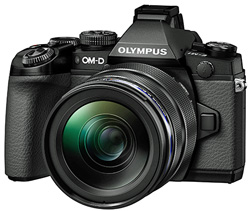
‘The total Interchangeable lens category in Australia has experienced shrinkage; however there has been growth in the Compact System Camera technology market of approximately 27 percent year-to-date,’ said Joe Tizzone,sales and marketing manager, Olympus Imaging Australia.
‘We have not observed a decline in our interchangeable lens sales, in fact we have noticed significant growth, especially since the launch of our two new flagship models PEN E-P5 and OM-D E-M1.
‘The popularity of the Compact System type interchangeable lens camera is growing at a rapid rate and the category continues to evolve with several solid offerings from a number of suppliers.’
He said the E-M1 is still in high demand and the E-M5 ‘continues to be a core part of our line-up and will be a hot item this Christmas.’
Mr Tizzone said that Olympus has always engaged with the specialist retail sector and ‘as our Interchangeable lens camera line-up continues to grow, so will our relationship with specialist retailers.’
Olympus’ M43 competitor, Panasonic, was equally positive on interchangeable lens camera sales.
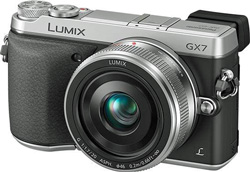
‘The mirrorless market segment continues to show double digit growth in Australia and this has helped keep interchangeable lens market total units steady this year,’ said Alistair Robins, group marketing manager, Lumix and AV, Panasonic Australia. ‘In fact, our sales for the G Series this year have been beyond our forecast expectations.’
While Mr Robins (along with Mr Tizonne) would not discuss changing market shares, he did note that, ‘what Panasonic can say about local performance is that here in Australia we are experiencing strong performance for the G Series, and the mirrorless market sector as a whole is growing in this country.
‘The Lumix DMC-GX7 is selling strongly and we also expect the Lumix DMC-GM1 to be a strong Christmas seller when it is launched in December.’
Panasonic has embarked on a channel exclusivity strategy for its top-line interchangeable models: ‘(Our) market strategy for the G Series currently is that the DMC-GX7 and DMC-GH3 are exclusive to specialist channels. The wider G Series range, including the new DMC-GM1 is available to our other retail partners.
‘This approach is proving to be very successful.’
Mr Robins also said that lens sales were healthy: ‘Lenses are also selling extremely well and we are seeing strong demand for the 12-35mm and 35-100mm f2.8 lenses and also the GX7 kit with the premium 25mm f1.4.’
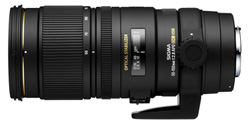
The two top accessory lens suppliers Maxwell (Tamron) and CR Kennedy (Sigma) support the observation that this category is travelling well.
CR Kennedy director, Clem Kennedy told Photo Counter that the company had just experienced a record couple of months in lenses, and that overall the second half of the year had been exceptional.
He said demand had been so strong, particularly for new Sigma releases, that Kennedys had been challenged in keeping the supply flowing. He observed that sales of Sandisk memory cards were also booming and said he expected that it would be a ‘good Christmas’.
Maxwell managing director John Swainston acknowledged that ‘the published results of the two leading ILC companies and their recent lowered forecast volumes of a further 5 percent for the year, are naturally of concern.’
Camera sales are the most significant driver of second and third lens sales.
‘Tamron in Australia, like all major brands servicing the enthusiast market, has seen volumes run at lower unit levels than last year, when everyone had forecast double digit increases.
‘However our share of the market remains on an upward curve, especially in value terms.’
He said sales of the recently introduced high end f2.8 90mm Macro VC, the 24-70 f/2.8 VC and the 70-200mm f2.8VC, ‘continue to strengthen’. He said Tamron hoped to have the new 150-600mm lens in the market ‘prior to the new year’.
Maxwell has launched its 60-day money-back satisfaction guarantee ‘that proved so popular in the Christmas period last year’ and extended it to the entire Tamron range: ‘It’s…another way we are working to enhance local offerings for retailers vs. parallel imports,’ he said.
‘At Maxwell we expect to end 2013 with sales at the same level or slightly ahead of last year in a market that looks like being some 10 percent lower than 2012, so we are pleased we are contributing to holding the line on sales for customers in what is clearly a challenging time in retail.’
So how is business on the street?
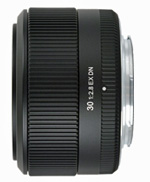
‘It’s not easy, but we are doing reasonably well. I’m reasonably happy with it,’ said Alan Small, Taree Camera House. He suspected this was partly because retailers like Harvey Norman were playing less of a role in photo retailing, and there were fewer specialist retailers in business.
Lens sales had been important over the year.
‘Lenses are probably our major sale now in terms of hardware. They have been our saviour – the number of lenses exceed the number of cameras we have sold – and of course the margin is better.’
In terms of camera sales. Mr Small said that there seemed to be a ‘swing back towards Nikon’ and that ‘there’s been a shift towards Pentax – at least in my neck of the woods.’
He hadn’t seen demand ramping up for mirrorless interchangeables as yet.
‘Not to the degree the industry expected, anyway. But I do think there will be a move towards them when they are discovered by more women, and pricing becomes more realistic, and that is happening.
‘There is room for good growth in this area of the market.’
Peter Michael, (Michaels CVD, Melbourne) concurred that there was buoyancy in at least some categories.
‘Compacts are tougher, but there is still some growth in SLRs and mirrorless,’ he said, adding that ‘mirrorless has legs’.
His lens sales were actually growing.
‘I’m optimistic that Christmas will be good for us,’ he said.
(Photo Counter also approached Nikon and Ted’s Cameras for comment in preparing this feature.)





Be First to Comment